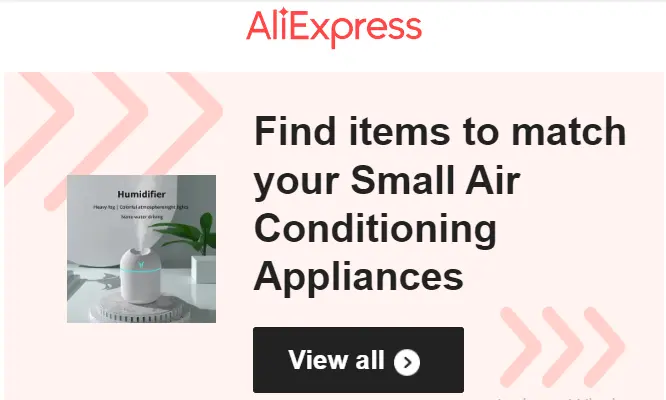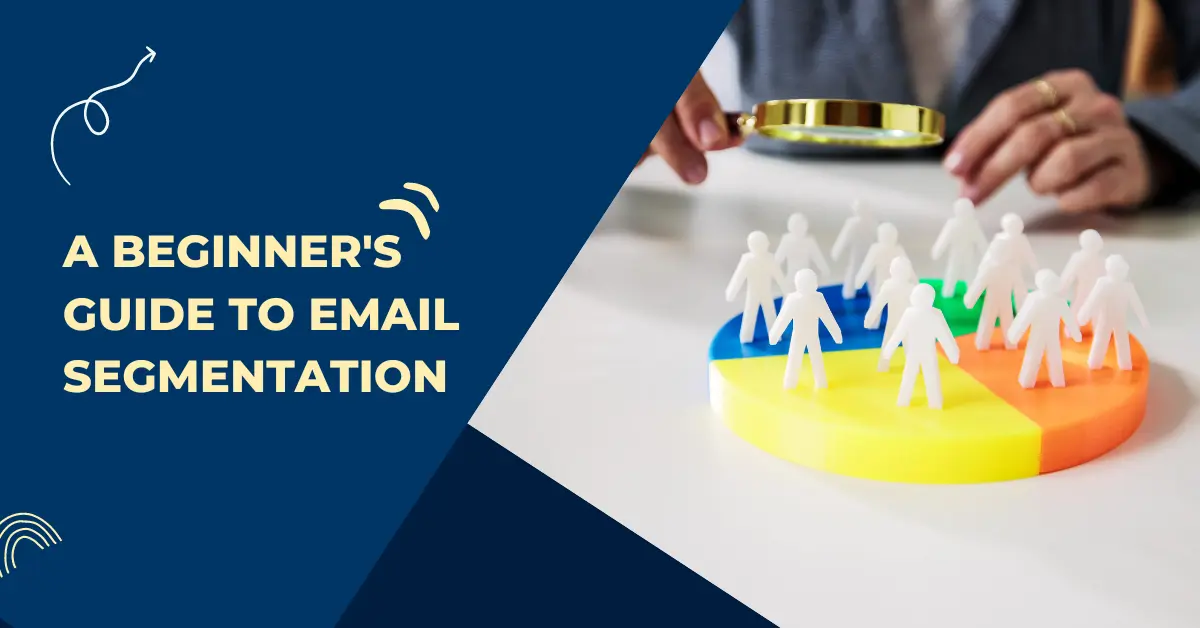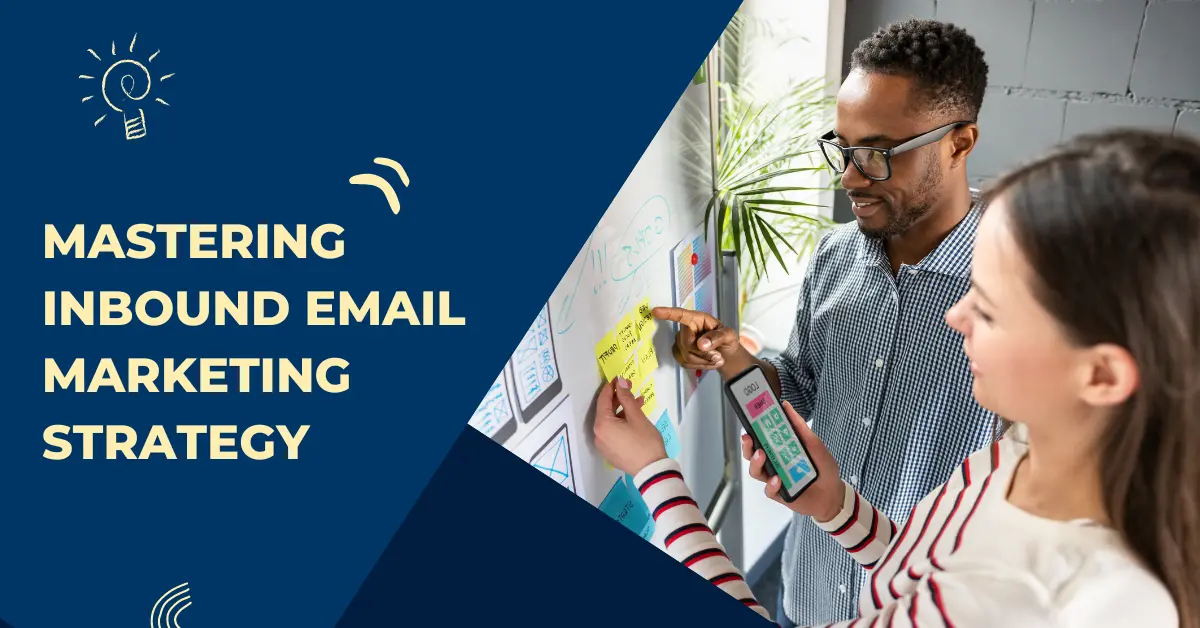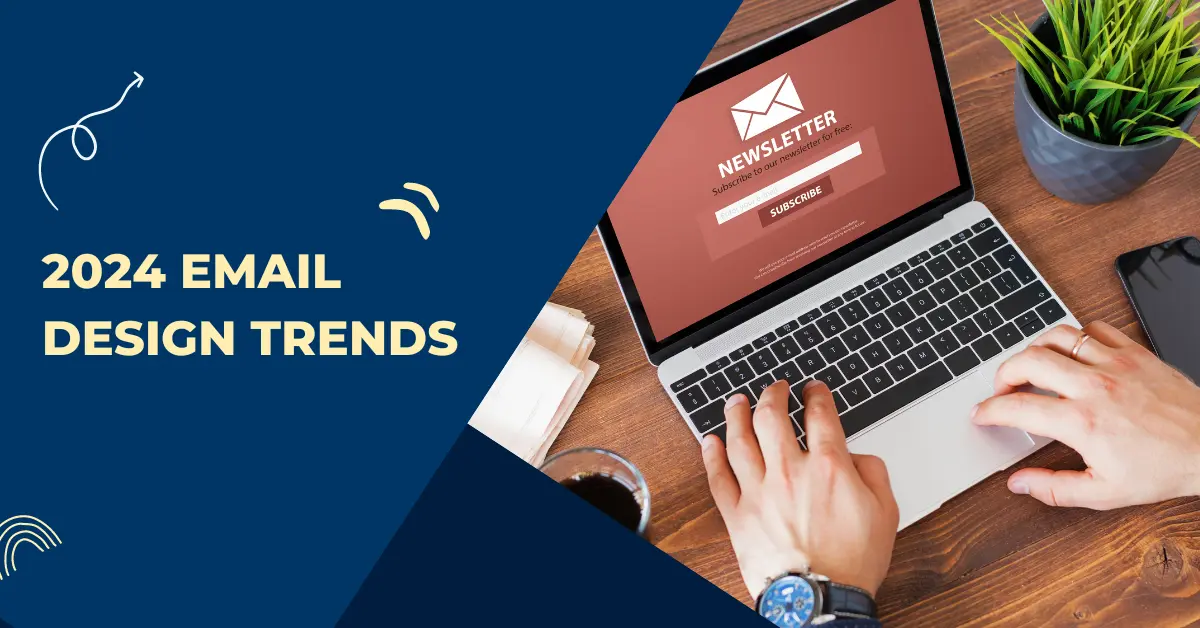Ever visited a state or local library before?
If yes, you’ll notice the dozens of shelves housing several books arranged based on their genre, topic, and, sometimes, the author. This makes it easy to locate your book of choice or find the one that aligns with your interests.

Now imagine entering another library without these categorizations… everything stacked up and disordered. You’ll probably spend years moving through the rows or just walk out – the latter, most likely.
That’s exactly what happens when you run email campaigns without segmenting your list first. It’s more or less like lumping all your subscribers together even if their interests differ, and this can result in:
- Non-personalized and unlabelled emails.
- Lack of proper targeting or precision.
- More unrelated content.
In extreme cases, recipients click the unsubscribe button, report you as spam if that’s easier, or mark your emails as “not important.” Any of these outcomes can damage your sender’s reputation and reduce your email marketing returns on investment (ROI).
To help you avoid that, we will explore email segmentation and how you can use it to scale your business.
What Is Email Segmentation And How Does It Work?
Email segmentation, also called email list segmentation, means breaking down your email lists from bulk collections into smaller groups based on certain data such as age, location, previous interaction, and interests. These smaller groups are known as segments.
Assume you have over a hundred thousand email subscribers. This is an extremely large figure, and one thing is certain: each person on this list has a different need or preference. So, sending the same email addressing the same needs will not make the cut.
In this case, you can divide them into ten sections – that’s around ten thousand email subscribers per list. You can even go as far as breaking them down into just a thousand per list.
And note that you’re not just doing an irrational division. Each list is made up of people with similar interests, either through demographic and behavioral data or personal indications when signing up.
Your ultimate goal is to connect with each recipient on a personal level. The smaller your list, the more possible this is.
5 Reasons You Should Segment Your Email List
Email segmentation creates pin-hole accuracy, leading to extreme personalization. This means your subscribers are receiving only relevant, down-to-earth information, not a generalized email packed with fluff and weekly jargon.
Besides the high level of personalization, email segmentation earns you the following:
- Increased Engagement
Email segmentation helps you send personalized emails with relevant subject titles and content.This results in higher open and click-through rates since your content is bound to resonate with the receivers and stand out in an overcrowded inbox.
If your content craft is at its peak with some good humor, you can even get your subscribers to type one or two words back to you.
- Higher Conversion And ROI
Increased engagement is a green light showing that subscribers are interested in your emails.You can easily leverage this interest to nurture them from cold leads into hot and loyal potential customers, making them perform an action, buy a product, or subscribe to your services.
High conversion leads to higher ROI and that’s more revenue for your business. No wonder email marketing gives a $31 ROI for every $1 invested.
- Low Unsubscribe Rates
If your subscribers gain value from your emails, then there’s no reason for them to kick you out of their inbox or click the exit button.On the other hand, they’ll be eager to receive more content from you or jump on other resource wagons you send.
Lower unsubscribe rates equal high subscriber retention and less capital spent on trying to acquire new leads for your list.
- Stronger Sender Reputation
Sending relevant content to your email list reduces the chances of getting reported as spam and drops your unsubscribe rate to the lowest.This results in a higher sender score and tells email service providers (ESPs) that your content is worth giving a green pass.
Bonus fact: Getting on the good side of ESPs drastically reduces the chances of your emails landing in any other folder except the primary inbox.
- High Email Delivery And Deliverability
Email delivery means your emails get to subscribers irrespective of where they land—whether in the spam folder, promotions tab, or inbox.In contrast, email deliverability means your emails land everywhere except the spam box.
When you target the right group with the right type of content, you’re indirectly fostering a good relationship with them. A strong sender-subscriber relationship and higher sender score, in turn, increase both delivery and deliverability, thus enhancing your email visibility.
Criteria For List Segmentation
Remember the scenario we painted at the start of this article? To keep a library organized, you must categorize and arrange the books inside based on genre, topic, author, or relevance.
Likewise, you can keep your lists segmented by using specific criteria such as subscriber demographics, behavioral heatmaps, interests, geographical data, past purchases, organization, etc.
1. Demographic
Demographic-based segmentation is the most basic and does not involve how the subscriber feels. You’re typically categorizing your subscribers based on age, gender, occupation, income level, and education level.
While that’s generic, demographic segmentation actually offers many advantages. For instance, Netflix uses age-based segmentation to communicate with and tailor content within an acceptable range for a particular age group.

Most importantly, behavioral segmentation digs beyond surface details and focuses on a subscriber’s pain points or needs through predictive calculations. For example, “John visits the children’s category a dozen times weekly, so let’s send him an email highlighting products from the children’s category.”
Or it could be a heatmap tracking users’ journeys. For instance, eCommerce subscribers abandoning a cart midway might be grouped and sent a reminder email to continue their purchase.
2. Organization Type And Industry
Other segmentation types focus on an individual’s workplace, role, industry, and, sometimes, experience level. A perfect example is a list that contains thousands of freelancers and in-house experts. You could break this list into different categories, such as content writers, graphic designers, email marketers, business owners, etc.
If you want to build your authority by engaging both ends of marketing niches, you can first categorize by which subscriber is B2B and which is B2C. Then, further classifications involving titles, experience level, suites, and brand revenue generated can come in.
How you address business leaders in the B2B niche will or must differ from how you handle B2Cs.
3. Interests As Indicated
Of all the methods of segmentation, this is the simplest since your email recipients are the ones deciding what type of content they want to receive.
At the sign-up stage where users drop their details, most email marketers add a consent form that displays the type of content subscribers will receive. Others pop out a preference page containing all the possible categories subscribers might be interested in.
For example, if you’re a digital marketer, you might want to segment your list based on topics including SEO, outreach, PR, etc. Including these categories in your post-sign-up page encourages subscribers to choose which one fits their needs best.
How To Segment Your Email Lists
A report by CampaignMonitor shows that 74% of online consumers are frustrated when they receive irrelevant email content, pop-ups, and ads that do not align with their interests.
To avoid that and ensure your subscribers receive only personalized emails, follow these simple steps.
1. Select A Segmentation Criteria And Methodology
In previous sections, we discussed a few criteria – demographics, behavior, organization and industry, and interests. You need to choose one that best aligns with the services or type of content you provide.
For instance, essential segmentation criteria like location are a good start if you plan to invest in cross-border marketing. On the other hand, eCommerce brands will benefit more from behavioral segmentation based on customers’ previous interactions or past purchase history.
Other important segmentation details:
- You can choose more than one segmentation criterion. In fact, most companies, including Netflix, combine demographics, behavior, and interests to create a highly specific list. But the more criteria you add, the narrower your list becomes.
- Dynamic segmentation updates criteria based on your subscribers’ ever-changing behaviors, whereas static segmentation remains fixed until you personally tweak it. The former is recommended because it ensures you keep up with your subscribers’ needs.
Importantly, decide whether to keep your lists super-granular or broad.
2. Collect Data
Once you have your criteria and essential approach, roll out surveys and polls to hear from your potential subscribers and audience.
In this place, you need to ask questions like:
- Basic Demographic Information
- Age (for age-related promotions, birthdays, etc.)
- Gender
- Location (city, state, country)
- Education level
- Occupation/Income level
- Email Preferences
- How often would you like to receive emails from us?
- What type of content are you most interested in receiving via email? (e.g., promotions, educational content, newsletters)
- Do you prefer short and concise emails or longer, more detailed ones?
- Interests and Hobbies
- What are your hobbies or interests?
- Which topics are you most interested in? (e.g., technology, health and wellness, travel)
- Are there any specific products or services you want to hear more about?
- Purchase Behavior
- How frequently do you make purchases online?
- What types of products or services do you typically purchase online?
- Have you made a purchase from us before? If so, what did you purchase, and how satisfied were you with your experience?
- Brand Engagement
- How did you first hear about our brand?
- How often do you engage with our brand on social media?
- Have you participated in any of our events or promotions in the past?
- Feedback and Suggestions
- What do you like most about our emails?
- What improvements would you like to see in our email communications?
- Is there anything else you would like to share about your experience with our brand?
- Privacy and Consent
- Would you like to receive personalized emails based on your preferences and behavior?
- Are you comfortable with us using your survey responses for email list segmentation purposes?
3. Create Segment And Set Triggers
Import the data collected from your polls and surveys into customer relationship management software (CRM) like Hubspot or Salesfoce. Then, integrate this data with your preferred email marketing software, such as MailChimp. This integration is usually tricky to handle, so you might need our experienced email marketers to step in here.
Once you’ve onboarded the data, configure your email software with the appropriate triggers to follow when creating segments. This could be anything, such as age from the demographics, past purchase history from behavioral patterns, or a combination of multiples.
Then, test-run these triggers with personal data—yours, friends, and family’s—and see how effective they are before using subscribers’ data.
4. Create Personalized Emails On The Go
Now that everything is in place, create email sequences targeting each segment on the go. This stage involves tailoring your subject lines, email titles, call-to-action (CTA) titles, and content to each segment.
Also, note that email segmentation means you’ll have to create more content than before. That’s a lot of work, and you might need to leverage email tools that come with AI features for email writing. But you definitely won’t get top-of-the-pyramid content.
Alternatively, get an email marketing team if you need highly personalized email content that moves the needle. They have years of experience in handling bulk content for your versatile lists and campaigns
Wrapping Up On Email Segmentation
Email marketing is as simple as ABC if you lay your stakes right. And one of these stakes is list segmentation. This approach helps you roll out content tailored to your subscribers’ needs, down to the most basic, and directly boosts engagements, ROI, email deliverability… any good thing you can think of.
To get started, select a segmentation criteria and a suitable methodology based on your services. Then, create surveys to collect data on what your audience needs. Integrate the analyzed report into your CRM and email software to create segments based on specific triggers.
Lastly, craft emails personalized to each segment and watch your email metrics shoot up. If you find any step difficult to handle, let us know below, and our team of email marketing experts will step in right away.
If you are ready to dive into this, which I strongly suggest…. Click Here to book a free consulting session on How to build an email list and also get free marketing tips.
See you soon.



